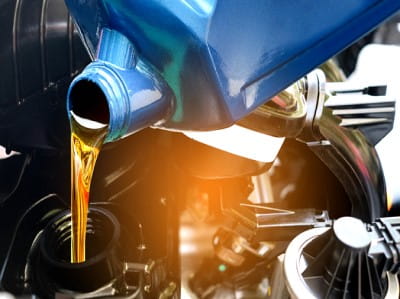John Townsend
Public Relations Manager, DC
O: (202) 481-6820 (ext. 4462108)
C: (202) 253-2171
jtownsend@aaamidatlantic.com
WASHINGTON, D. C. (Tuesday, November 12, 2019) ––It is historic by all measures. Earlier today Maryland Governor Larry Hogan and Virginia Governor Ralph Northam announced “a bi-state, bipartisan accord to create a new, unified Capital Beltway, replace the aging American Legion Bridge, and relieve congestion at one of the country’s worst traffic chokepoints.” The historic agreement will deliver on its promises, notes AAA Mid-Atlantic, which today issued the following statement applauding the plan to expand and improve one of the biggest bottlenecks in the entire Washington metro area and also along the Interstate 95 corridor that stretches from Maine to Florida.
While the debate continues to roil over adding Express Lanes to the Maryland section of the Capital Beltway and Interstate 270, traffic volume intensified in recent years by more than 25,000 vehicles per day from the Virginia side of the Potomac River via the American Legion Memorial Bridge to the Clara Barton Parkway along the Maryland side of the river.
AAA Mid-Atlantic concurs with the Northern Virginia Transportation Alliance (NVTA). “The American Legion Bridge is our region’s greatest chokepoint, making many Maryland and Virginia employment centers inaccessible to thousands of skilled workers.” It adds, “In 1965 the American Legion Bridge carried 48,000 vehicles daily. Today, daily traffic averages 235,000 vehicles and by 2040 it is projected to increase to 280,000.” But the increases in daily traffic are occurring quicker than anticipated or projected.
In terms of daily traffic levels and historical trends, the American Legion Bridge is one of the biggest bottlenecks in Montgomery County. In recent years, the freeway segment along the Inner Loop of the Capital Beltway from the Virginia state line to the Clara Barton Parkway has become an even bigger bottleneck and headache.
Unsurprisingly, that was the case in the period from 2014 to 2017, when the average inventory of vehicle trips along mile-points on that stretch of the Capital Beltway/Interstate 495 soared from 227,350 vehicles per day in 2014 to 252,710 automobiles a day by 2017, overwhelming the capacity of the segment.
It comprises an 11.1% increase in the total volume of vehicle traffic. Traffic count trend-lines slipped slightly in 2018 to 251,191 automobiles per day, for 91.6 million vehicles last year.
In May, Virginia announced it hopes to extend the I-495 Express Lanes from the Dulles Toll Road interchange to the vicinity of the American Legion Bridge, already “the most congested interstate segment in the entire Washington metro area.” In 1997, the average daily traffic volume on the American Legion Bridge was 204,000 vehicles.
Daily traffic counts also increased on the freeway segment from the Clara Barton Parkway to MD 190 by nearly 17,000 automotive vehicles each day in the period from 214,744 in 2012 to 231,375 every day by 2017. It represents a 7.7% dailiness increase in the sum of motorists sifting through the segment dreaded for its insufficient capacity at rush hour. Day-to-day, 228,463 drivers passed through the segment during 2018.
The American Legion Bridge is the only direct transportation connection or nexus over the Potomac River between Fairfax and Montgomery counties. From 1990 to 2010, of the daily commuters between the two counties, “the Montgomery County resident share increased to 58 percent,” according to a 2013 study by the George Mason University Center for Regional Analysis.
What is more, through travelers account for about 30 percent of the traffic on the American Legion Bridge. The Maryland Department of Transportation reports that “the segment of the I-495 Inner Loop between the American Legion Bridge and the Interstate 270 Spur has a bottleneck factor index of 6.5, more than three times higher than any other segment of the Beltway.”
Traffic is projected to increase to 300,000 vehicles per day on segments of I-495/I-95 a decade from now, that is to say by 2030. A May 2019 poll by The Washington Post revealed 61% of Washington-area residents “favor adding express toll lanes to Interstate 270 and Maryland’s part of Capital Beltway.”
Encircling Washington, D.C. the Capital Beltway stretches 64 miles in clockwise and counterclockwise directions. However, the Maryland side of the Capital Beltway wends 44 miles, while the segment of the circular road in Virginia extends “22.06 miles from the District of Columbia border.” The Maryland SHA is seeking to add Express Lanes along “70 miles of highway in the I-270 and I-495 corridor.”
“Congestion on Maryland highways in the National Capital Region costs the economy about $1.3 billion a year in traffic delays, and travel times are expected to increase by 70 percent by 2040,” according to the Maryland SHA. The average commute time to work in Maryland is 32.7 minutes.
Follow us on Twitter: @AAADCNews
Like us on Facebook: AAA Mid-Atlantic News
Washington, D.C. Mailing Address:
1405 G Street NW
Washington, DC 20005
AAA provides automotive, travel and insurance services to 60 million members nationwide and nearly 82,000 members in the District of Columbia. AAA advocates for the safety and mobility of its members and has been committed to outstanding road service for more than 100 years. The not-for-profit, fully tax-paying member organization works on behalf of motorists, who can now map a route, find local gas prices, discover discounts, book a hotel and track their roadside assistance service with the AAA Mobile app for iPhone, iPad and Android. For more information, visit https://aaa.com
Ragina C. Ali
Public Relations Manager, MD
O: (410) 616-1900 (ext. 4361152)
C: (443) 465-5020
RAli@aaamidatlantic.com







